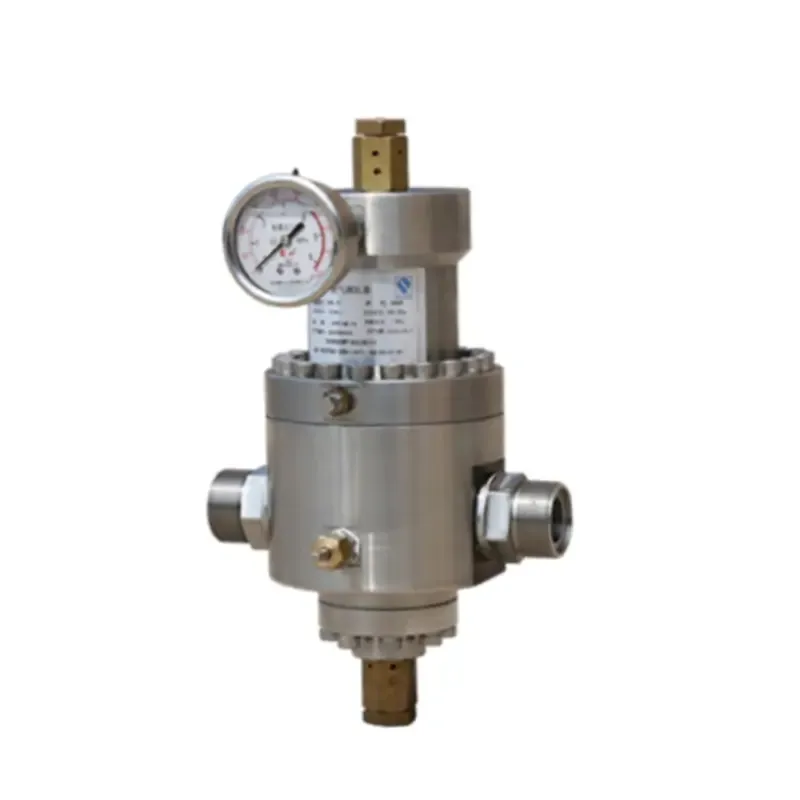
Nov . 10, 2024 18:06
Back to list
Understanding the Functionality of Natural Gas Pressure Regulators in Energy Systems
Understanding Natural Gas Pressure Reducers
Natural gas is a vital energy source that fuels various applications, ranging from residential heating and cooking to industrial processes and electrical power generation. However, the delivery of natural gas requires careful regulation of pressure to ensure safety and efficiency. This is where natural gas pressure reducers come into play. These devices are essential components in the natural gas distribution system, ensuring that gas reaches end users at safe and usable pressure levels.
What is a Natural Gas Pressure Reducer?
A natural gas pressure reducer, also known as a pressure regulator, is a device that decreases the pressure of natural gas from a high-pressure source to a lower, controlled pressure suitable for use in residential or commercial applications. The purpose of the reducer is to ensure that gas flows consistently and safely to appliances such as furnaces, water heaters, and stoves, while preventing dangerous overpressure situations that could lead to leaks or equipment damage.
How Does a Pressure Reducer Work?
The pressure reducer functions based on the principles of fluid dynamics and mechanical engineering. It consists of several key components an inlet port, a diaphragm, and an outlet port. When natural gas enters the reducer from the high-pressure main line, the diaphragm senses the inlet pressure. If the pressure exceeds the preset level, the diaphragm moves to restrict the flow of gas, effectively reducing its pressure before it exits through the outlet port.
Most pressure reducers offer a spring-loaded mechanism that maintains a constant output pressure. The spring's tension can be adjusted to set the desired outlet pressure level, ensuring that gas appliances receive a steady supply of gas at the correct pressure, even if demand fluctuates.
Types of Pressure Reducers
Natural gas pressure reducers come in various types, each designed for specific applications. For instance, there are
1. Single-Stage Regulators These are commonly used in low-pressure applications where pressure variations are minimal. They provide a straightforward and cost-effective solution for residential gas supply.
2. Two-Stage Regulators These are employed in situations where more precise pressure control is needed, such as in commercial and industrial settings. The two-stage design provides better regulation and reduces the potential for pressure fluctuations.
natural gas pressure reducer

3. Electronic Regulators Advanced models incorporate electronic controls to monitor pressure and flow dynamically. These systems can adjust in real-time, offering improved efficiency and safety, often used in critical applications.
Importance of Pressure Reducers in Safety
The primary role of a natural gas pressure reducer is safety. High-pressure gas poses various risks, including leaks, explosions, and equipment failures. Regulators ensure that the pressure is appropriately managed, protecting both the infrastructure and users. Regular maintenance and inspection of pressure reducers are essential practices for gas utilities and consumers alike to prevent malfunctions that could lead to hazardous situations.
Moreover, building codes and safety regulations typically mandate the use of pressure reducers in natural gas systems. Compliance with these standards not only promotes safety but also enhances system reliability and efficiency.
Maintenance and Best Practices
To ensure that pressure reducers function effectively, regular maintenance is crucial. Here are some best practices
- Routine Inspection Regular checks for leaks, corrosion, and wear and tear can help identify potential issues before they become serious problems. - Calibration Ensuring that the reducer is calibrated correctly to deliver the desired pressure helps in optimizing the performance of gas appliances.
- Professional Servicing Whenever maintenance is required, it is advisable to hire certified professionals who can handle pressure systems safely and effectively.
Conclusion
Natural gas pressure reducers are critical components that facilitate the safe and efficient delivery of natural gas to residences and businesses. By regulating gas pressure, these devices not only ensure that appliances operate correctly but also play a significant role in preventing dangerous overpressure situations. Understanding their function and importance can help consumers and professionals appreciate the vital role they play in the natural gas ecosystem, ensuring safety, efficiency, and reliability in energy consumption. As we continue to rely on natural gas for various applications, the significance of pressure reducers will only become more pronounced, highlighting the need for ongoing advancements and best practices in gas regulation technology.
Latest news
-
Safety Valve Spring-Loaded Design Overpressure ProtectionNewsJul.25,2025
-
Precision Voltage Regulator AC5 Accuracy Grade PerformanceNewsJul.25,2025
-
Natural Gas Pressure Regulating Skid Industrial Pipeline ApplicationsNewsJul.25,2025
-
Natural Gas Filter Stainless Steel Mesh Element DesignNewsJul.25,2025
-
Gas Pressure Regulator Valve Direct-Acting Spring-Loaded DesignNewsJul.25,2025
-
Decompression Equipment Multi-Stage Heat Exchange System DesignNewsJul.25,2025

